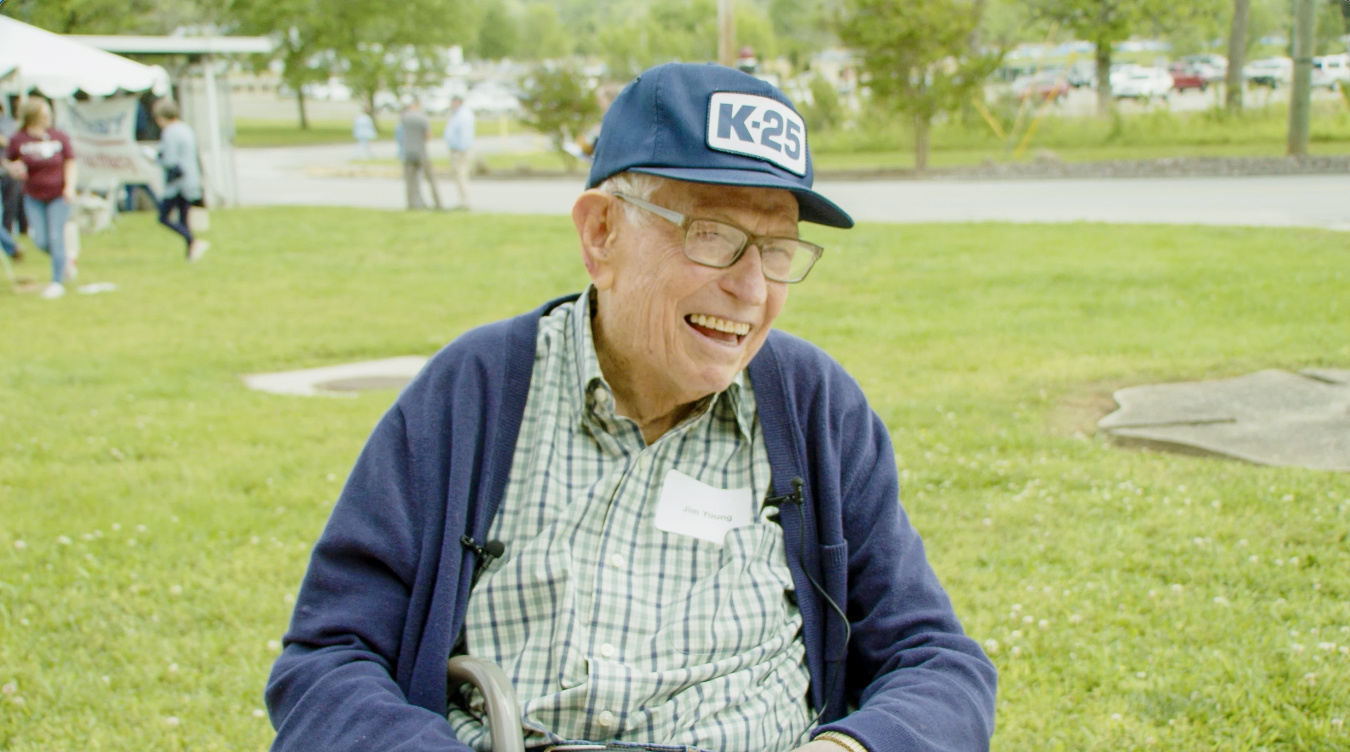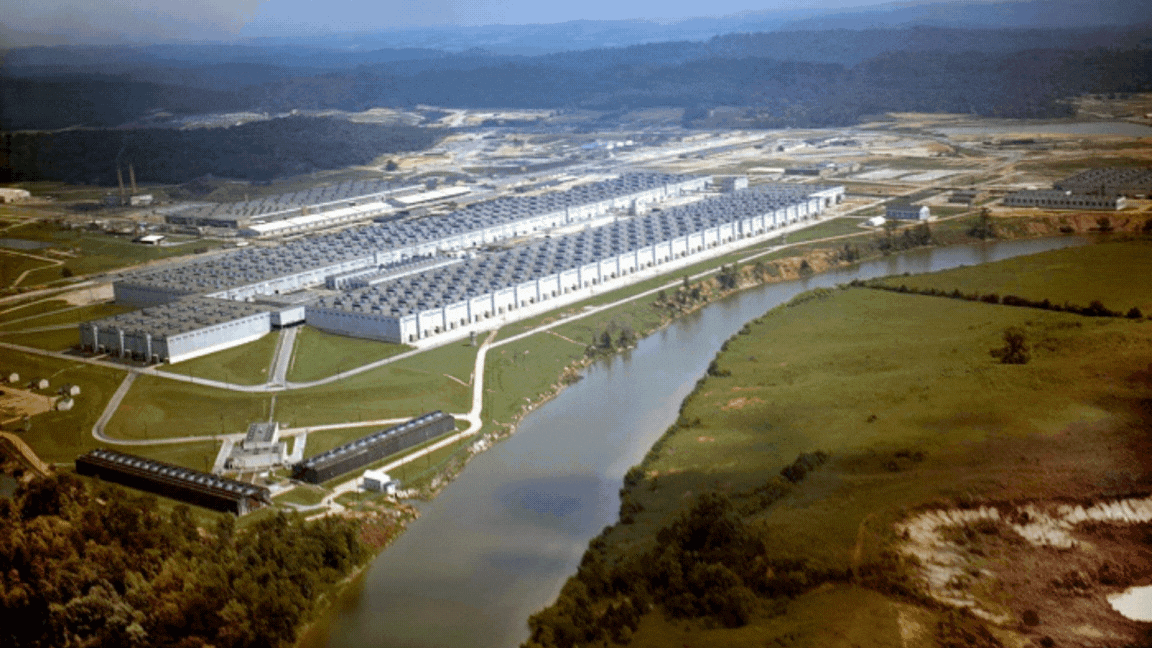Long vacant parking lots at the former K-25 site at Oak Ridge were full again on a recent Saturday afternoon as retired employees gathered for a first-ever reunion.
Office of Environmental Management
May 21, 2024
Jim Young was the oldest retiree in attendance at the K-25 site reunion. The 101-year-old started working at the K-25 site as a security guard in May 1944.
OAK RIDGE, Tenn. – Long vacant parking lots at the former K-25 site at Oak Ridge were full again on a recent Saturday afternoon as retired employees gathered for a first-ever reunion.
“There are some folks here that I have not seen since I retired,” said Bob Merriman, who began working at the K-25 site in 1963. “It’s amazing to be able to visit with them and to see them still doing well.”
What started as a plan to host a small picnic quickly turned into much more.
“I said we’ll have it down here at Turtle Park in Oak Ridge, but I think I’m going to open it up to all K-25 workers,” said Pam Toon, an event organizer who started work at the site in 1987. “When I did, massive amounts of people signed up.”
More than 650 former K-25 employees jumped at the chance to see friends from years past. All of them arrived thankful for an opportunity to reconnect and share memories that go back generations.
“It feels wonderful to see faces you haven’t seen in years,” said Harold Conner, who began working at the site in 1964.
The oldest attendee was 101-year-old Jim Young, who began working there in 1944 as a security guard.
He recalled how busy the site was while it was being built and operated during the Manhattan Project.
“It was as crowded as a city, and you couldn’t walk without bumping into someone,” said Young.
The K-25 plant played an essential role in the top-secret Manhattan Project to help end World War II. Inside what was once the world’s largest building, employees enriched uranium used in the first atomic weapon.
“When they dropped that bomb, when we got back to work, the security part didn’t change a bit. Some of the security guys thought we’d be going home,” Young said.
But they didn’t.
Over the next 40 years, employees at the K-25 site enriched uranium that powered the nuclear Navy, produced fuel for 14 countries and developed new enrichment technologies. In one of its lesser known roles, the facility also housed Oak Ridge’s first supercomputer.
“Fusion was the main focus, but it wasn’t the only thing,” said Merriman. “There was a lot of isotope separation theory that was developed here. Also, there was an intelligence organization headquartered here that provided a lot of support to the intelligence community as it related to what other countries were doing or might be doing in uranium enrichment and fuel reprocessing and things like that.”

When it was constructed during the Manhattan Project, the K-25 building was the largest in the world. The first photo here shows the former K-25 site and Poplar Creek in 1950. The second photo shows a view of the site in 1983 before it was closed permanently in 1987. Over the years, employees there enriched uranium that powered the nuclear Navy, produced fuel for 14 countries and developed new enrichment technologies.
When it was constructed during the Manhattan Project, the K-25 building was the largest in the world. The first photo here shows the former K-25 site and Poplar Creek in 1950. The second photo shows a view of the site in 1983 before it was closed permanently in 1987. Over the years, employees there enriched uranium that powered the nuclear Navy, produced fuel for 14 countries and developed new enrichment technologies.
Although the site was closed permanently in 1987, the impact of these men and women remains.
“More people need to be appreciative of the people that worked here, and what they did. And people need to be recognized for that,” Toon said.
The U.S. Department of Energy Office of Environmental Management (EM) built the K-25 History Center, and it will open the new K-25 Viewing Platform next year. Both the center and platform share the story of what happened at the site.
Through EM’s work, all buildings at the former K-25 site have been cleared away. Those projects eliminated hazards and cleared land the community can reuse for economic development.
While reunion attendees expressed sadness to see their places of work no longer standing, they also shared excitement that the site can have a new chapter that benefits the nation.
Due to the popularity of the reunion, organizers are making plans to host another reunion set for April 26, 2025. Next year marks the 80th anniversary of the K-25 site.
-Contributor: Ben Williams
To receive the latest news and updates about the Office of Environmental Management, submit your e-mail address.


